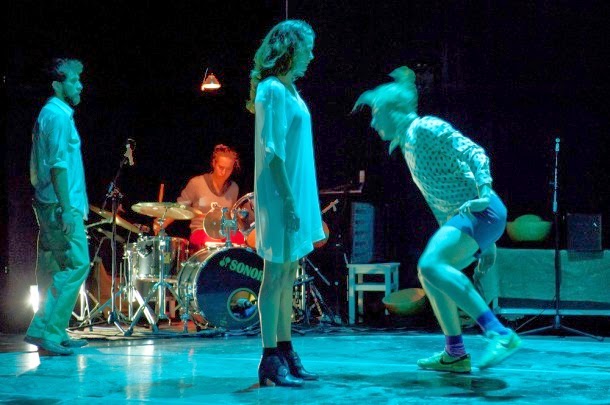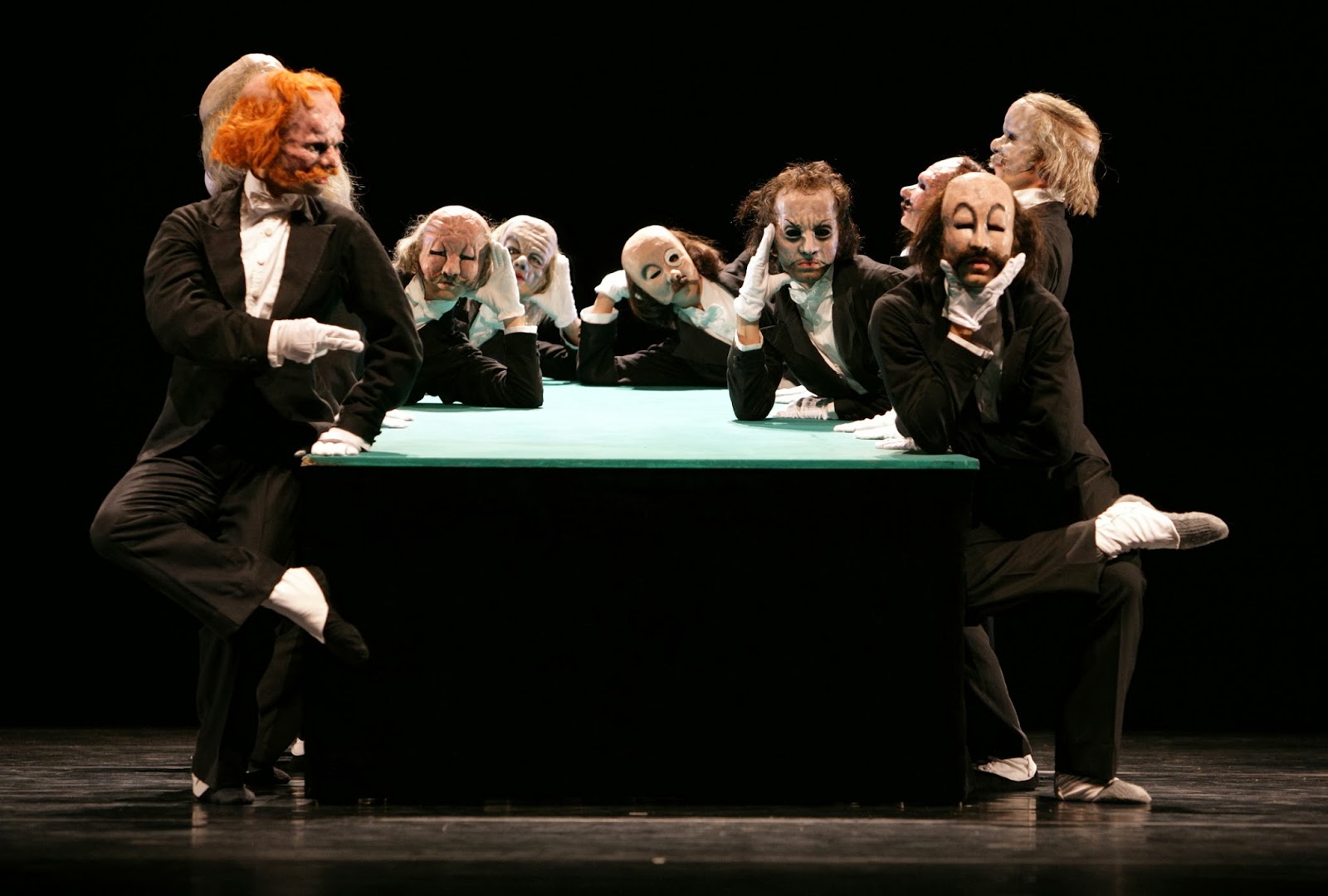16-03-2014
Arnhem Theater Musis Sacrum Schouwburg/ Kleine zaal
SPRING
TIDE
Assistance: Clare Dowling
Costums: Mirte Engelhard
Dramaturgical advice: Dorine Cremers
DANCERS
Yeli Beurskens, Patricia Deutekom, Wojciech Grudzinski,
Denise Klevering, Jouke Rouwhorst, Felipe Salazar
REALIZATION
AND LIVE MUSIC
Ensemble Batida
One of the most
interesting piece I’ve never seen and fascinated me the most is "SPRING
TIDE" by Jens Van Daele. Spring tide is a piece that combines dance and
theatre with live music of love and hate. The story is about a game of
attraction and repulsion between the positive thoughts of men and the dark
fantasies of women.
It’s accompanied by
two percussionists, two pianists, and a typewriter; suddenly voices whisper
texts in French. Spring tide shows many duets that are constantly repeated
throughout the piece. The language of movement that the choreographer has
created with dancers is fast, robust and complete, he uses a lot of resistance.
The dancers
performed the piece with loose hair
that was waving menacingly around without making any noise. What fascinated me the most was the strong
dynamic of the movements and the eccentricity of the choreography. This different, intense, poetic, and energetic piece
combined with the strong live music and the lights created an extraordinary
atmosphere which made me feel in another world, I was awake all the time
waiting for the next step.
The build up was amazing, the tension shocking, the
dancers performed the piece exceptionally.
The one I appreciated was Patricia Deutekom
and I suppose she could have been the main character of the piece, considering
her strong physicality, the clarity of her movements. I liked the way she
approached the audience, performing the piece.
The interesting thing is that a few months ago I
had the opportunity to do a workshop at school with Patricia and Denise in
which we did a small piece picked up from “SPRING TIDE”. We worked in pairs to
create a small duet in which one of us was the “active” person and the other
one the “passive” person.
I enjoyed the experience of partnering, the new style
and the dynamic of the movements because it was something completely new for
me.
I hope that one day, I’ll have the opportunity
to join Jens Van Daele projects and to become part of this rising company.
VIDEO
Gilda
Federica Cesario DM1







 ‘’Ghost Track’’
‘’Ghost Track’’ 